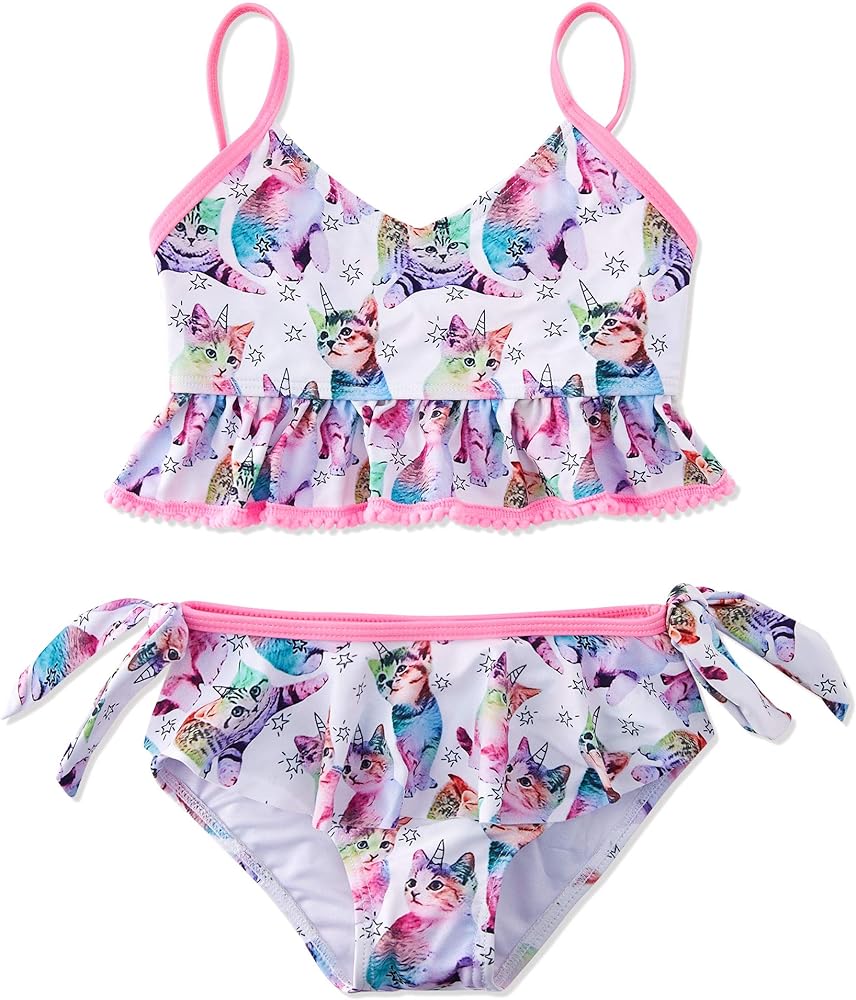Media and Societal Pressure
The influence of body image ideals on young girls’ bathing suit preferences is strongly linked to media and societal pressure. Media platforms often portray a narrow and unrealistic standard of beauty, emphasizing thinness, flawless skin, and a specific body shape. These unrealistic ideals can lead young girls to develop negative body image perceptions and a desire to conform to these unattainable standards. Consequently, their bathing suit preferences may be influenced by a desire to hide perceived flaws or conform to societal expectations. It is crucial to address these influences and promote body positivity, diversity, and self-acceptance to ensure young girls’ bathing suit choices are driven by their own comfort and confidence rather than external pressures.
Peer Influence and Social Comparison
Peer influence and social comparison play a significant role in shaping young girls’ bathing suit preferences. During adolescence, individuals often compare themselves to their peers and seek validation within their social circles. Young girls may feel pressured to wear certain styles or designs to fit in or emulate their friends’ choices, even if those preferences do not align with their own comfort or body image. Peer pressure can create insecurities and negatively impact self-esteem, leading young girls to choose bathing suits based on popularity rather than personal preference. Encouraging a supportive and inclusive environment can help mitigate these influences, allowing young girls to make bathing suit choices that genuinely reflect their individuality and comfort.
Parental Influence and Role Modeling
Parental influence and role modeling also play a crucial role in shaping young girls’ bathing suit preferences and body image ideals. Parents serve as primary influencers in their children’s lives and can impact their self-perception and body image. The way parents talk about their own bodies, discuss societal beauty standards, and encourage acceptance and self-love can significantly impact young girls’ body image and their choices in bathing suits. Promoting open and positive discussions around body image, emphasizing health and self-confidence over appearance, and encouraging young girls to make choices based on their comfort and preferences can help counteract negative influences and foster a healthy body image.
Empowering Body Positivity and Self-Acceptance
Empowering body positivity and self-acceptance is crucial in influencing young girls’ bathing suit preferences. By promoting a diverse range of body types, sizes, and shapes in media, advertising, and fashion, young girls can see themselves represented and learn to embrace their unique beauty. Encouraging a focus on health, well-being, and self-confidence rather than conforming to societal beauty standards can help young girls make bathing suit choices driven by their personal comfort and preferences. Emphasizing the importance of self-love and self-care, and teaching young girls to value themselves beyond their physical appearance, can help create a positive body image foundation that guides their bathing suit preferences and overall well-being.
Conclusion
The influence of body image ideals on young girls’ bathing suit preferences is a complex issue shaped by media and societal pressure, peer influence, parental guidance, and the promotion of body positivity and self-acceptance. By addressing these influences and promoting a supportive and inclusive environment, society can help young girls make bathing suit choices that align with their own comfort, confidence, and individuality. Encouraging discussions around body image, fostering self-love and acceptance, and providing diverse representations of beauty can empower young girls to make choices independent of societal pressures and develop a positive relationship with their bodies. Ultimately, it is essential to prioritize the well-being and self-esteem of young girls, allowing them to make bathing suit preferences based on their own comfort and personal preferences rather than external expectations.
